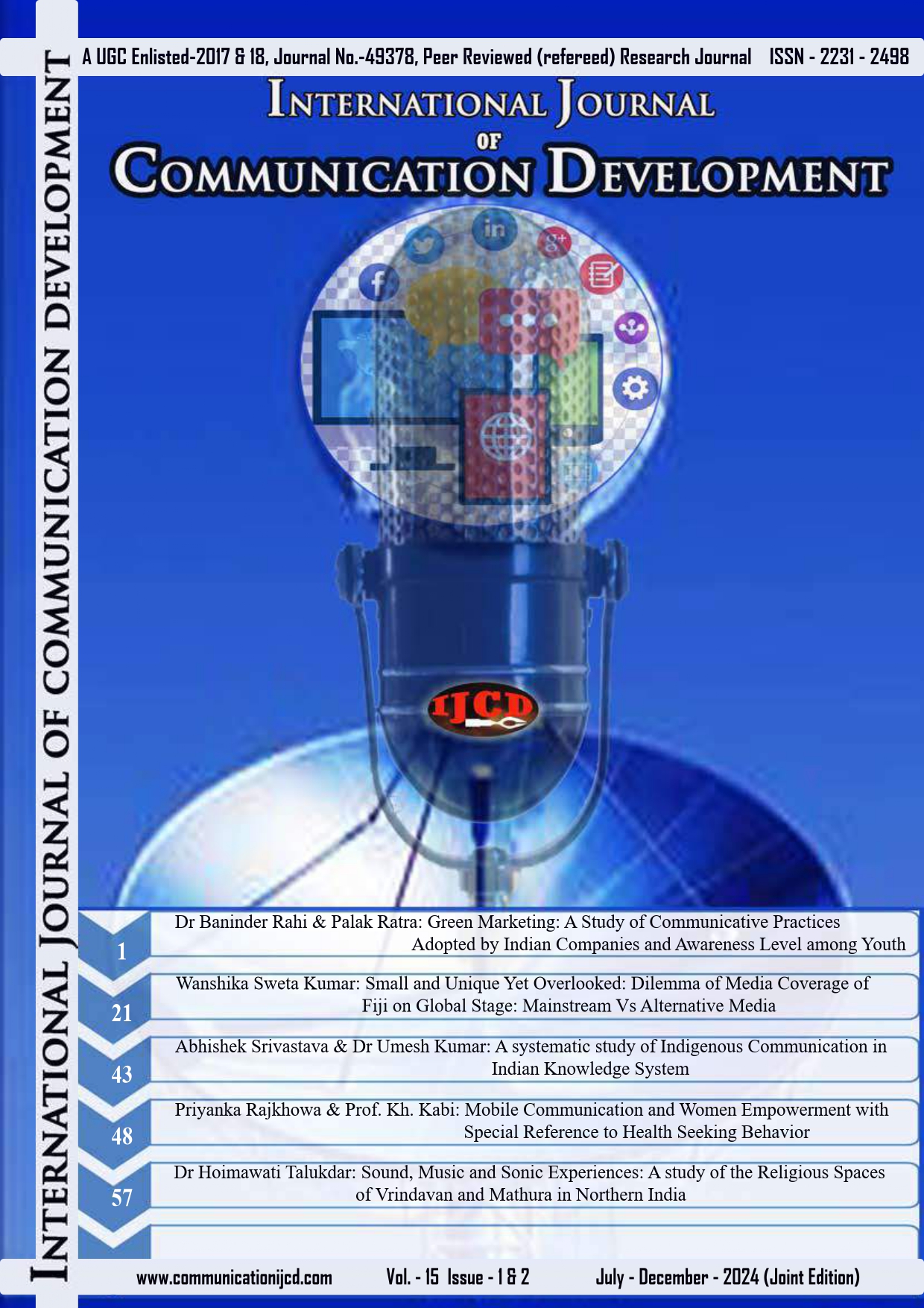Sound, Music and Sonic Experiences: A study of the Religious Spaces ofVrindavan and Mathura in Northern India
##plugins.themes.bootstrap3.article.main##
Abstract
Music has the potential to stir strong emotions, particularly feelings of exhilaration and exuberance in
religious contexts. However, for music to induce a religious experience, the listener must cognitively
appraise the subjective experience as a religious experience. This understanding of music as a
religious experience is typically learned through participation in religious rituals accompanied by
music during religious services. Over time, music has become intertwined with the individual's mental
depiction of these rituals, allowing them to recreate the emotional experiences associated with the
rituals across different times and places. Music and religion are strongly linked in a variety of ways.
Individuals solace in facing existential fears by aligning themselves with these two cultural symbols:
music and religion. These symbols serve as extensions of their belief systems, offering a sense of
continuity beyond their personal existence. It is through this idea that the study navigates and explores
the idea of religion as sonic expression by re-looking at the religious spaces of Vrindavan and
Mathura, two most sacred spaces for Hindus in the northern India. The method undertaken for this
study is field study. Two places were considered for the study – Vrindavan and Mathura in Uttar
Pradesh, India. The theoretical framework referred to here is the soundscape theory by R. Murray
Schafer. n religious music and its influence on religious experience. Not much is explored in how
secular music can trigger religious experience in secular individuals. This study investigates the
incorporation of a more in-depth analysis of universally present musical elements such as monotony,
repetition, and simplicity in the religious music of Vrindavan and Mathura, in Uttar Pradesh.



